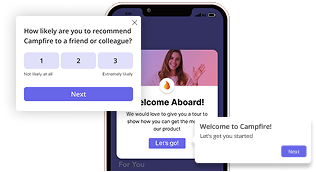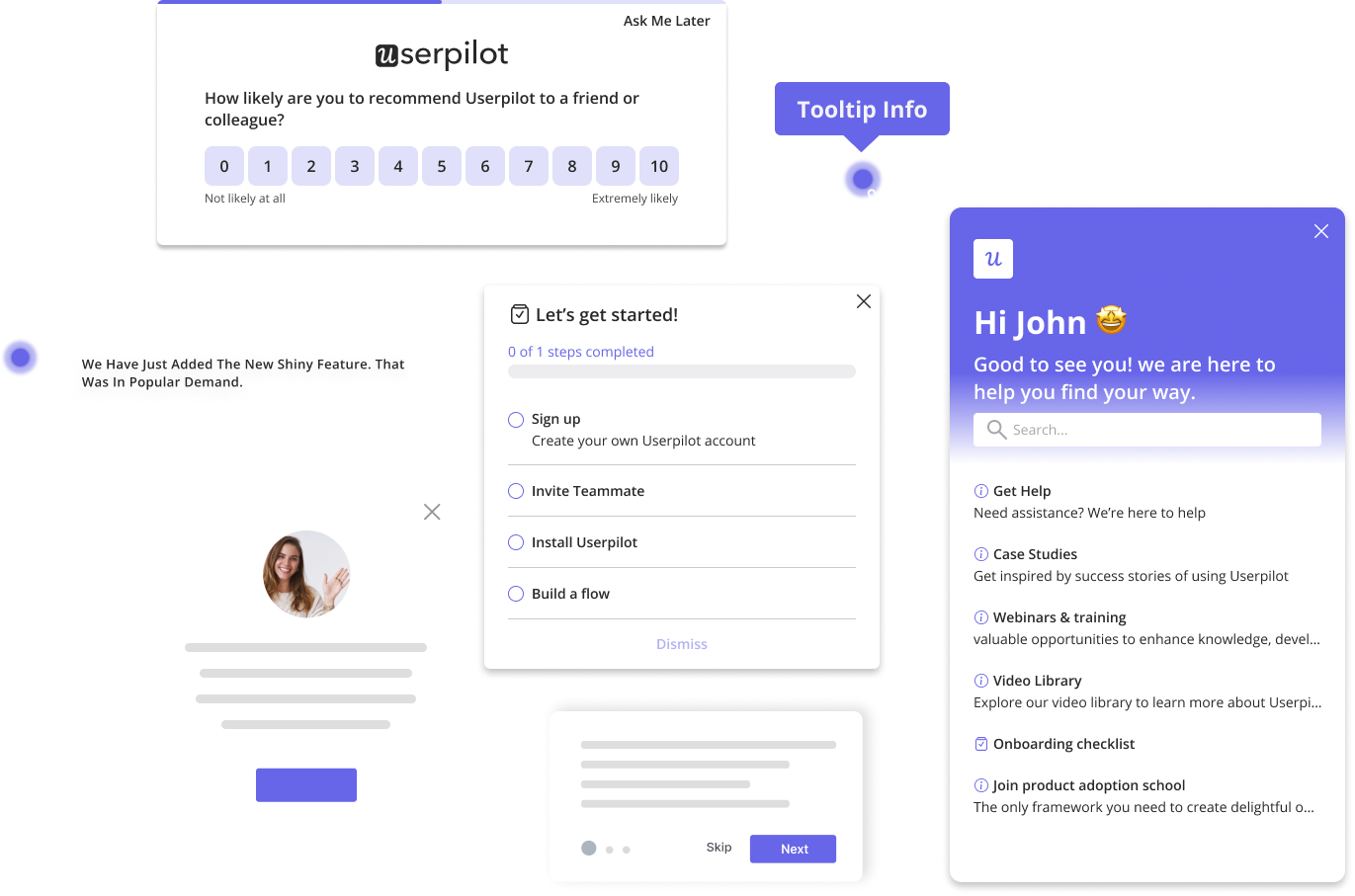
You’re on a website, trying to complete a simple task. Perhaps you’re trying to sign up, find a setting, or check out, but something isn’t working. You hover over a specific button, expecting it to do something. Nothing.
You move your mouse back and forth, searching for the correct link—still nothing. Frustration creeps in. You start shaking the cursor, clicking rapidly, hoping that something will work.
This is a thrashed cursor, aka the digital equivalent of throwing your hands up in exasperation. It’s what users do when they can’t find what they need or when something is broken. Users won’t stick around if your product has many of these moments. They want to finish everything on their first click.
The good news? These moments aren’t invisible. With session recordings, you can spot thrashed cursors in action and fix them before users churn out of frustration.
I’ll explain how you can use session replays to identify issues and fix a thrashed cursor in no time.
Try Userpilot Now
See Why 1,000+ Teams Choose Userpilot

What is a thrashed cursor?
A thrashed cursor is erratic, rapid, and often repetitive mouse movements on a webpage or application interface. They are an unmistakable frustration signal, typically indicating that something isn’t working as expected.
It is a customer experience distress signal. It’s a behavioral red flag that reveals user frustration caused by poor UX issues that might otherwise go unnoticed.
Why a thrashed cursor is an issue you don’t want to ignore
A thrashed cursor isn’t just a quirk of user behavior. It’s a symptom of deeper UX problems. Here’s what a thrashed cursor might indicate:
- Users aren’t finding what they’re looking for: When they expect to find information in a certain place but don’t, they move their mouse erratically, hovering over empty spaces or clicking on non-clickable elements.
- Confused about the next step: If your onboarding flows or navigation don’t provide a clear next step, users might hesitate and circle the same button repeatedly, unsure what to do next.
- Encountering a bug or technical issue: A broken submit button, a form that won’t process, or an interactive element that doesn’t behave as expected will often trigger rage clicks as users attempt to resolve the issue themselves.
When people repeatedly encounter friction with no quick resolution, frustrated users are more inclined to abandon your site or app. Over time, that frustration robs you of one user’s loyalty and ripples through word of mouth, online reviews, and social media discussions.
This is particularly damaging if your product relies on a subscription model, where you need consistent renewals. Potential leads, especially those who might be trialing or evaluating your product against competitors, are unlikely to convert if they see bugs or confusing flows.
By the time you notice the churn in your metrics, you’ve already lost valuable opportunities to expand your user base and secure new deals. Therefore, recognizing mouse thrashing and taking swift action to remove friction points is essential for maintaining strong customer relationships, boosting conversion rates, and preventing unnecessary losses.
How to identify a thrashed cursor in your product
You can’t fix what you don’t see. Here’s how to spot thrashed cursors before they hurt your business:
- Ask your support team: Your customer support team is often the first to hear about user frustration. If customers frequently report struggling with a specific feature or page, it’s worth investigating session recordings on that site or app.
- Track drop-off points in the funnel: Tracking drop-off points in your conversion funnel can help pinpoint where users are encountering too many steps, leading to rage clicks and churn.
Once you identify a problem area, session replay software can help visualize user behavior.

Imagine you are a SaaS product manager for a team collaboration platform and recently revamped the signup flow. As soon as you launch a redesigned signup process, support tickets start coming in from people who cannot progress past the “Invite Team Members” stage.
Your analytics confirm a sudden increase in drop-offs at precisely that point in the funnel, so you decide to investigate what might be going wrong by reviewing session replay data.
With Userpilot, you can filter the recorded sessions by users (who raised a ticket) or by a drop-off point in the journey.

You can raise this bug with your engineering team so that the developers apply a fix to the onboarding flow.
Session replay tools show the exact moment of user frustration. You can use our session replays feature to highlight these frustration signals, comment on specific elements, and share them for debugging.

This deeper visibility allows you to focus development efforts on fixes and improvements that truly matter, ultimately providing a more seamless onboarding experience and increasing overall product adoption.
Once you’ve identified and are working on a fix, notify users who encountered the issue. With proper segmentation, you can send in-app notifications saying:
“We noticed an issue that may have affected your digital experience, and we’re actively fixing it. Thank you for your patience!”
Also done code-free with Userpilot.
This transparency reassures users that their feedback is valued and builds trust in your product.
Identify and fix thrashed cursors immediately with Userpilot
Thrashed cursors aren’t just a minor annoyance. They’re a loud, flashing warning sign that something in your UX isn’t working and kill customer experience.
By leveraging session replays and funnel analysis, you can turn user frustration into actionable insights—before it turns into churn. Book a demo today to see how Userpilot can help you uncover hidden UX issues and keep users engaged.
FAQ
What is a thrashed cursor?
A thrashed cursor is erratic mouse movement that signals user frustration, often caused by bad UX, unclear navigation, or technical issues.
How do you fix a broken cursor experience?
Identify problem areas using session replays and funnel analytics. Fix confusing UI elements, improve affordance (visual cues for interactions), and test usability with real users.
What is a rage click?
Rage clicks happen when users repeatedly click on an element expecting it to work, but nothing happens, often due to slow network, poor UX or broken functionality.
What is a ghost cursor?
A ghost cursor refers to a UI state where the cursor moves or interacts without user input, often due to slow load speeds or rendering issues.







